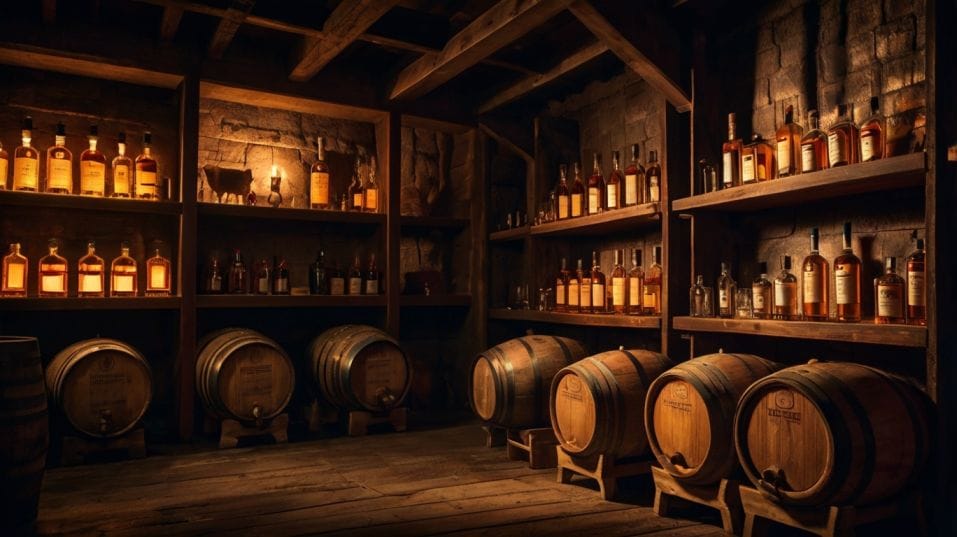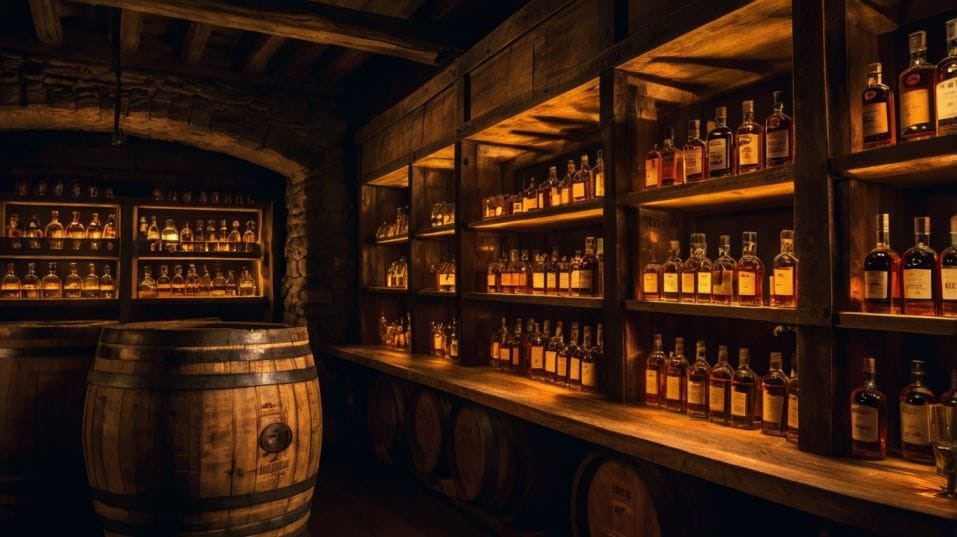Rare Bourbon vs Rare Scotch — Which Holds Value?
Rare bourbon vs rare Scotch—discover which builds flavor, value, and legacy best so you can collect, taste, and invest with confidence.

Ever wonder which whiskey delivers more long-term value—rare bourbon or rare Scotch? Not just in dollars, but in depth, aging potential, and real collecting satisfaction?
If you're early in your whiskey journey, this decision shapes how you buy, taste, and grow your knowledge. One hits hard and fast.
The other unfolds slowly, rewarding patience. Learn how each style builds value so you can drink smarter, collect confidently, and skip the hype.
What Rare Really Means
Before you put anything on a pedestal, step back and define what “rare” should mean to you. Some bottles are rare because production was intentionally limited.
Others are rare because demand outpaced availability. And some are rare simply because people with no real tasting experience decided they were. That last category? Avoid it.
True rarity should connect to quality, intention, and distinctiveness. If it doesn’t deliver something memorable when you pour it, then it’s just another sealed bottle collecting dust for the sake of ego or resale.
Rarity also shows up differently in bourbon and Scotch. Bourbon tends to frame rarity around barrel selection, mashbill nuance, and aging in charred new oak—usually between 8 and 20 years.
Scotch, on the other hand, leans into long aging in various cask types (sherry, bourbon, port), regional characteristics, and time-tested distillery profiles, often stretching into 30-, 40-, or even 50-year-old territory.
One hits you with raw, bold impact. The other pulls you in with evolving complexity. You can’t judge value until you understand what style resonates with how you taste.

Rare Bourbon: Bold, Immediate, and Market-Driven
Rare bourbon often feels like the most “American” side of whiskey collecting—direct, fast-moving, emotionally charged.
You’ll see limited editions from legacy distilleries, barrel-proof monsters, and hyper-allocated annual releases that drive local and online feeding frenzies.
The Upside
The upside? Rare bourbon gives you flavor on contact. The best bottles offer rich sweetness, heavy oak, spice, and structure that even new drinkers can appreciate right away.
If you like your whiskey loud—both in proof and personality—bourbon’s the easier on-ramp.
It’s also more accessible to chase early on. Build relationships with local liquor stores, get familiar with store picks, and you’ll start spotting bottles that others overlook.
But beware: the bourbon market is also noisy, hype-prone, and easily manipulated. Just because a bottle’s hard to find doesn’t mean it’s worth your money—or your palate.
Volatility and Hype
Resale value in bourbon is volatile. Prices swing fast, and you’ll find more speculators than serious drinkers.
If you’re buying strictly to flip, you’re not really collecting—you’re just playing a short-term game in a crowded field.
If you’re building a collection for flavor and prestige, focus on producers with consistent quality over time, not just those riding the trend cycle.
Bourbon values fast gratification. And that can be powerful—if you know how to filter out the noise.
Rare Scotch: Slow Burn, Deep Roots, Global Prestige
Rare Scotch doesn’t feel rare in the same way. It’s less about scarcity at the checkout counter and more about legacy in the bottle.
The best rare Scotches aren’t just old—they’re deliberate. They reflect decades of patient aging, often in warehouses with dramatically different climates, using refill barrels or exotic wine casks that shape each expression in distinct ways.
Broader Flavor Spectrum
Where bourbon relies heavily on new oak to shape its identity, Scotch has more tools to play with—peated vs. unpeated malt, coastal influence, elevation, and finishing techniques.
That means flavor in rare Scotch can range from elegant and floral to briny and smoky to dark, sherried richness. The spectrum is wider, the storytelling deeper.
Scotch also carries more global weight. Limited editions from respected distilleries often age well in terms of both taste and value.
Unlike bourbon, Scotch isn’t as reliant on U.S. retail cycles. It has international infrastructure, collectors across continents, and auction houses that track provenance and pricing with more rigor.
Requires Study
That said, Scotch collecting has its own pitfalls. You can pay top dollar for age and status and still get something that falls flat—especially if you don’t understand the distillery’s character or the influence of the cask.
It rewards study. If you’re willing to learn region by region, style by style, you’ll build a palate that sees past the label and into the liquid. Scotch values long-term nuance. It rewards curiosity and depth—not just scarcity.
The Tasting Payoff
Here’s where it gets real. Ask yourself what kind of drinker you want to be. If you want whiskey that punches hard and gives you big payoff with every pour, rare bourbon is hard to beat. It’s like tasting in bold type.
Even smaller age statements can taste powerful and fully developed thanks to the climate and new oak barrels. The flavor is there, upfront and undeniable.
If you want whiskey that reveals itself slowly, changes in the glass, and stays with you long after the finish—rare Scotch earns its keep.
Its elegance isn’t always immediate, but it’s often unforgettable. That’s why serious drinkers come back to it over time: it makes you think, then delivers more once you’ve learned how to listen.
In short, rare bourbon teaches you to appreciate power and structure. Rare Scotch teaches you to appreciate detail and restraint.
If you train your palate with both, you’ll start recognizing quality even in simpler bottles—and that’s when you stop buying blind and start collecting with confidence.
The Market Side: Risk, Liquidity, and Long-Term Holds
Let’s not pretend value is only about taste. You might be thinking about the long game—whether that’s future trading, legacy building, or simply curating bottles that feel impressive and personal.
Bourbon’s Short-Term Spike
Rare bourbon offers quick upside if you’re nimble and plugged into the scene. Get the right bottle early, and you can double or triple your investment overnight.
But it’s unstable. Prices spike on social buzz and crash just as fast. Most collectors who try to play the bourbon market burn out or fill their shelves with overpriced hype.
Scotch’s Global Consistency
Rare Scotch moves slower but steadier. Auction markets are more mature. There’s deeper history and stronger global infrastructure around pricing, authentication, and demand.
If you’re looking for stability—or eventually handing down a collection—Scotch typically offers more consistency. Fewer swings. Fewer flash-in-the-pan bottles. But it takes longer to understand what makes something truly valuable.
Final Thoughts: Build the Collection That Works for You
You don’t need to pick sides. You need to pick purpose. Rare bourbon gets you in the game fast. It’s visceral, exciting, and full of flavor even for beginners.
It teaches you to spot quality under pressure, to trust your palate when everything around you is hype. Rare Scotch invites you into something deeper—a slower, more personal relationship with history, place, and patience.
Either way, don’t collect to impress. Collect to understand. Every rare bottle you open should teach you something about whiskey—and something about what you like.
So pick one bottle this week that you’ve never tasted. Make it count. Take notes. Ask why it was made, who it was made for, and what it’s teaching you.
The only way to build a valuable collection is to build a sharp, fearless palate. Start there. Build from it. The value will follow.




